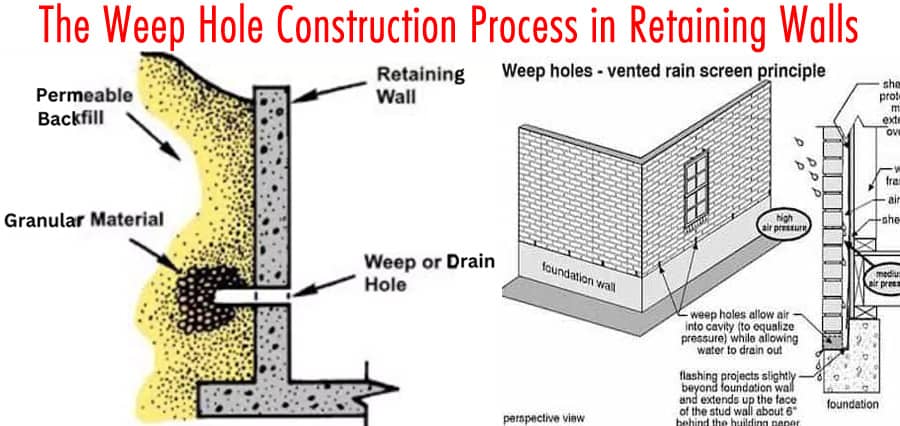The Weep Hole Construction Process in Retaining Walls

We understand that the construction process of retaining walls can be complex, especially when it comes to installing weep holes. However, we're here to provide you with a comprehensive guide on how to properly construct weep holes in retaining walls.
Before we dive into the construction process, let's first define what a weep hole is. A weep hole is a small opening that is placed in the retaining wall to allow the drainage of excess water. Without weep holes, water can build up behind the wall and cause damage, such as hydrostatic pressure, which can ultimately lead to the failure of the retaining wall.
Now, let's get into the construction process. The first step is to determine the number and location of weep holes needed for your retaining wall. The general rule of thumb is to have one weep hole for every 1.8 square meters (20 square feet) of wall surface. Weep holes should be spaced no more than 1.2 meters (4 feet) apart vertically along the retaining wall.
Next, mark the location of the weep holes on the retaining wall. It's important to ensure that the weep holes are installed at the lowest point of the retaining wall to allow for proper drainage. We recommend using a chalk line to ensure the weep holes are level and evenly spaced.
After marking the location of the weep holes, drill holes into the retaining wall using a masonry bit. The size of the hole should be large enough to allow for proper drainage but not too large as to allow for the entry of debris. We recommend a diameter of approximately 25mm (1 inch) for the weep hole.
Once the holes have been drilled, insert weep hole inserts into the holes. Weep hole inserts are small plastic or metal tubes that allow for water to drain out of the retaining wall while preventing debris from entering. It's important to ensure that the weep hole inserts fit snugly into the drilled holes to prevent movement or shifting.
Finally, backfill the retaining wall with gravel to ensure proper drainage. The gravel should be placed behind the retaining wall and extend up to the level of the weep holes. This will allow for water to drain out of the retaining wall and into the surrounding soil.
In conclusion, the construction process of weep holes in retaining walls is crucial to ensure the longevity and stability of the wall. By following the steps outlined above, you can ensure proper drainage and prevent the failure of your retaining wall. If you have any questions or concerns, feel free to reach out to us for additional guidance.
